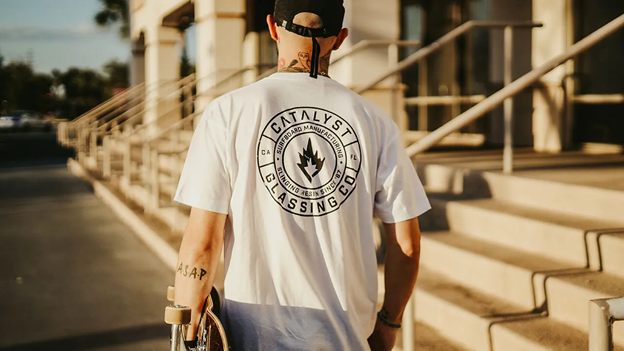Printing a design on a t-shirt can be a great way to promote a brand, showcase creativity, or even start a business. Whether you’re looking to create custom shirts for a company event, sports team, political campaign, or just for fun, getting the design right is key. A well-designed t-shirt can make a lasting impression and encourage people to wear it proudly.
But designing a t-shirt isn’t just about picking a cool image and throwing it on fabric. There are several factors to consider, including placement, colors, font choices, and even the type of shirt you’re printing on. Here’s everything you need to know to create a great custom t-shirt design.
Step 1: Define Your Purpose and Audience
Before you start designing, ask yourself why you’re making the t-shirt.
- Are you promoting a business or brand?
- Do you need matching shirts for a group or event?
- Are you selling custom t-shirts online?
Once you know your purpose, think about your audience. The design should appeal to the people who will wear it. A corporate team-building shirt will look different from a band merchandise tee or a political campaign shirt. Take some time to brainstorm ideas and sketch out a few concepts before deciding on a final design.
Step 2: Choose the Right Design Placement
Where you place your design on the t-shirt matters. Some common placement options include:
- Center Chest: The most common placement, perfect for logos and bold statements.
- Front Pocket Area: A smaller design on the left or right chest, great for company logos.
- Full Front or Back: Ideal for large graphics or text-based designs.
- Sleeves: Great for small logos or subtle branding.
- Lower Hemline: A trendy option for minimalistic designs.
Test out different placements by printing your design on paper and holding it against a t-shirt. This will help you visualize how it will look on an actual garment.
Step 3: Get the Right Image Size and Scale
When designing for different shirt sizes, remember that the same image may not look proportional on all of them. A design that looks perfect on a small t-shirt might look tiny on a 2XL shirt. Adjust the size of your design accordingly. As a general rule:
- Standard front print size: 10-12 inches wide
- Small chest logo: 3-4 inches wide
- Back print: 12-14 inches wide
Step 4: Keep It Simple and Impactful
A good t-shirt design should be eye-catching and easy to understand at first glance. Avoid cluttered designs with too many elements, as they can be overwhelming. Stick to a clean, simple layout that gets your message across.
Step 5: Choose the Right Colors
Color can make or break your t-shirt design. Here are a few tips for using colors effectively:
- Use high-contrast colors so the design stands out.
- Limit the number of colors to keep the design clean and professional.
- Consider how the colors will look on different shirt colors.
- If you’re using dark t-shirts, make sure your design is visible against the fabric.
Step 6: Pick the Best Fonts for Text Designs
If your t-shirt includes text, make sure it’s easy to read. Choose fonts that match the theme of your design. Here are some things to keep in mind:
- Don’t use more than two or three fonts in one design.
- Make sure the text is legible from a distance.
- Consider bold or block fonts for a strong impact.
- Use script or handwritten fonts for a more personal or artistic look.
Step 7: Add Borders or Backgrounds (If Needed)
Some designs look great on their own, while others benefit from a border or background. A border can help a design pop, especially on light-colored shirts. However, too much detail can make the design feel heavy, so use borders sparingly.
Step 8: Select the Right T-Shirt Fabric and Print Method
The type of t-shirt you choose affects the quality and durability of the print. Cotton shirts are the most common choice since they hold prints well. Here are some popular printing methods:
- Screen Printing: Best for bulk orders; durable and cost-effective.
- Direct-to-Garment (DTG): Great for detailed and full-color prints.
- Vinyl Printing: Ideal for single-color, bold designs.
- Sublimation Printing: Works well for all-over prints and polyester fabrics.
Step 9: Work with a Reliable Printing Company
Even the best design won’t look good if it’s printed poorly. Choose a printing company that offers high-quality prints, vibrant colors, and durable materials. Check reviews and request samples if possible before placing a large order.
Final Thoughts
Creating a custom t-shirt is a fun and creative process, but it requires planning and attention to detail. By following these steps, you can design a t-shirt that not only looks great but also serves its purpose, whether for branding, events, or sales. Keep your design simple, choose colors wisely, and pick the right shirt and printing method to ensure the best results. Happy designing!
8 T-shirt Design Tips for Custom Printing

